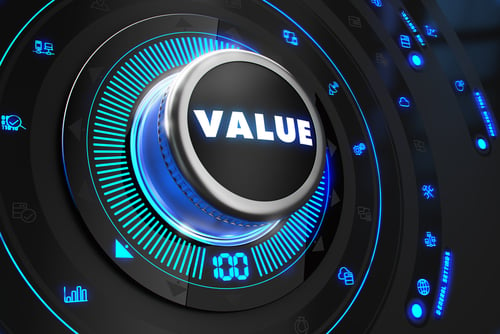If you’re not measuring the success of your customer loyalty program, you’re setting it up for failure.
Customer loyalty programs come in a variety of shapes and sizes: some are B2B, others B2C and some are even B&B2C (think BP and United Airlines fuel discounts and free airline miles). Who doesn’t love that?
Regardless of the style, it’s vital to have reliable metrics you can track. Without them, you're unable to measure the success, strengths and weaknesses of your program. Ultimately, this will cause you to lose opportunities to improve, grow and increase your ROI.
According to Bain & Company, a 5% increase in retention rates can increase profits by 25% to 95%! This is a massive claim, but when you consider it’s 5 to 25 times more expensive to acquire new customers than continue to serve current ones, you can see the truth behind it. So, a loyalty program that effectively increases retention — even by a small amount — can have a dramatic impact.
Think of it this way: many of the frequent flyer and hotel programs have liabilities in the billions of dollars, representing a massive investment in their membership programs. At a 3 billion dollar scale, even a 1% increase in ROI creates a $30 million dollar value. Imagine a 10% increase. You’d be looking at a $300 million dollar value.
So how do you start working towards these types of outcomes? That’s right — you use performance measurement.
But first, let’s clear the air and define the two different types of loyalty. There’s behavioral loyalty and there’s attitudinal loyalty. Behavioral loyalty is the person who regularly shops at the same place, while attitudinal loyalty is the person who advocates and promotes a brand. It’s possible for someone to be just one of these types, but ideally, you want to encourage them to be both. For the purposes of this post, we’ll be focusing on how to effectively measure behavioral loyalty.
Two Ways to Effectively Measure Loyalty

The goal of a loyalty program is to change a member’s behavior over time, encouraging them to become more loyal. There are two ways to measure loyalty: the historical view and the predictive view.
Measuring Customer Loyalty: The Historical View
The historical view focuses on analyzing data to gain insights into your customers' past actions and is relatively easy to create.
With the historical view you’re looking at:
- Trends in spending behavior over time
- Increasing cadence of purchasing
- Increasing size of basket
If the above metrics represent loyalty, then the performance of your program is measured by the direct changes and fluctuations within them. Aggregating and reporting on this data will show the effectiveness of your loyalty program and give insights into past trends. The shortfall to this is that it only indicates what people did — not what they’re going to do. It has a limited ability to provide insights into future behavior and how to position subsequent strategies for improved value. But that’s where the predictive view comes in.
Measuring Customer Loyalty: The Predictive View
The best example of this is predictive customer lifetime value (CLV), a predictive measurement of expected future profits generated by a member.
Of course, this can be further broken down into expected future revenue, expected future cost of goods sold and expected future redemption costs. Keep in mind, it’s important that loyalty programs net out the redemption cost in this calculation to properly reflect the economic impact in the analysis and quantify the economic reward. Otherwise, there’s no point in giving away costly points if you’re not bringing in more money than you’re giving away. This is crucial for proving the overall value of loyalty programs and their ROI.
With customer lifetime value as your measurement of loyalty, changes in CLV will indicate performance. An increasing trend in CLV will act as an indication of an effective loyalty program. This represents the loyalty program's ability to encourage members in a way that increases the expectation of how much they spend in the future.
The benefit to the predictive view is that it shows you what members are expected to do in the future. You can identify your highest value members — those driving the majority of profits — allowing you to target them and maximize future profits. This clear identification gives you the ability to anticipate the future and make strategic plays to influence the outcomes to increase incremental value.
The Bottom Line

Measuring customer loyalty is vital. Without the proper measurements in place you’re setting yourself up for disaster. Historic and predictive views are the two ways you can measure behavioral loyalty. Historical views utilize data to measure the success of the program's past. The predictive view looks at customer lifetime value, including expected future revenue, expected future cost of goods sold and expected future redemption costs. These insights allow you to identify high-value members and encourage the expectation of future spending.
By measuring customer loyalty you’re setting your current and future success in motion. It provides finance and marketing teams the data necessary to determine success and allows you to make informed decisions that positively impact the subsequent strategies and overall growth of your program.





